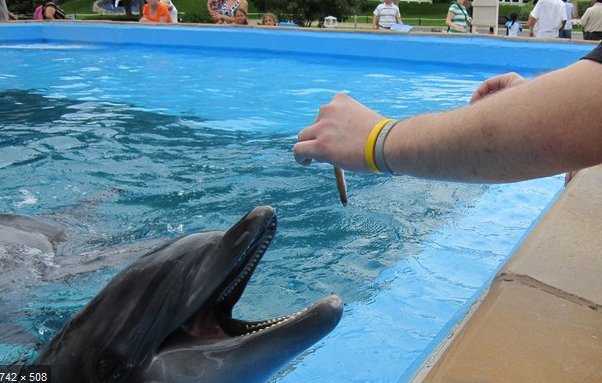
Imagine being in a river filled with twists and turns, where the sun barely reaches the depths. Here, river dolphins navigate these waters with ease, using their sonar abilities to find food. Unlike their oceanic cousins, they face different challenges—think murky water, fewer prey options, and the need for clever strategies. So, how do they manage to thrive in such environments? Let’s dive into their fascinating world of food and hunting!
Understanding the River Dolphin’s Diet
River dolphins have a diet that’s quite varied, which is essential for their survival in freshwater habitats. Unlike some oceanic dolphins that primarily feast on fish, river dolphins munch on a mix of aquatic creatures. Their food choices are influenced by what’s available in their specific habitats.
- Fish: Their primary food source is fish. They prefer species that inhabit shallow waters, like catfish and pike.
- Crustaceans: Shrimp and crabs can also be on the menu, adding diversity to their diet.
- Small mammals: Occasionally, they may hunt for small mammals, particularly in regions where riverbanks are lush with wildlife.
You might be wondering how they know where to find their favorite snacks. River dolphins are opportunistic feeders, meaning they adjust their diet based on what’s available. This adaptability is crucial as it allows them to stay nourished in changing environments.
The Unique Anatomy of River Dolphins
The anatomy of river dolphins plays a significant role in their hunting tactics. With long, slender bodies and flexible necks, they’re suited for weaving through complex river systems. Their blunt snouts are equipped with numerous teeth, perfect for catching slippery fish.
Interestingly, river dolphins also have a unique echolocation ability. This means they send out sound waves, which bounce off objects and return to them. This “sonar” helps them locate prey even in deep, murky waters. It’s like having their built-in radar system!
The more you learn about these fascinating creatures, the more you realize how evolution has tailored their bodies for hunting and survival in specific environments. Each feature, from their size to the shape of their heads, has a purpose.
Hunting Strategies: How They Catch Their Prey
When it comes to hunting, river dolphins employ various strategies that are as clever as they are effective. They don’t just swim around hoping to catch something; they have techniques that increase their success.
One common method is known as cooperative hunting. River dolphins often work in groups, surrounding schools of fish to drive them into tighter spaces. This makes it easier for the dolphins to snatch up their dinner. It’s a bit like when friends gather for a little get-together—everyone plays a role to create a festive atmosphere!
Sometimes, they also use the power of the current to their advantage. By positioning themselves strategically in the river, they can wait for fish to be swept closer. This strategy requires patience, but it often pays off.
The Role of Environment in Diet and Hunting
The environment plays a crucial role in shaping the diet and hunting strategies of river dolphins. Freshwater ecosystems, with their varying conditions, influence what these dolphins eat and how they hunt.
Factors such as water temperature, depth, and vegetation all impact the availability of food. For instance, in areas where water levels fluctuate, different fish species may thrive or dwindle. River dolphins must adapt their hunting tactics based on these shifts.
Moreover, pollution and human activities pose significant threats. When rivers become polluted, fish populations can decline, leading to food shortages for these dolphins. It’s a reminder of how interconnected our ecosystems are—what happens upstream affects everything downstream.
Challenges in Finding Food
Despite their impressive adaptations, river dolphins face many challenges in securing food. Habitat loss is a significant concern. As rivers are dammed or diverted for agriculture and urban development, dolphin populations can become isolated, making it harder for them to find enough to eat.
Overfishing is another big issue. As humans catch fish, the available prey for river dolphins diminishes. This competition can lead to malnourished dolphins and even threaten their populations.
Climate change is also making waves. Changes in weather patterns can alter river flows and temperatures, further affecting fish migration and availability. River dolphins need secure habitats and healthy fish populations to survive.
Conservation Efforts and Their Importance
With the challenges river dolphins face, conservation efforts are more important than ever. Various organizations are working to protect these unique creatures and their habitats. Simple actions, like reducing pollution and promoting sustainable fishing practices, can help bolster dolphin populations.
You might be surprised to learn that supporting local conservation initiatives can make a difference. Even small donations to relevant causes can aid in research and habitat restoration. As awareness grows, so does the chance for river dolphins to thrive.
By understanding their diet and hunting strategies, we take the first steps in valuing and protecting these incredible animals. After all, when we protect the rivers, we protect the life within them—dolphins included.
The Future of River Dolphins
Looking ahead, there’s hope for river dolphins. As more people become aware of their plight, conservation efforts are gaining momentum. Continued research on their habits and habitats is crucial in ensuring they have the resources they need to survive.
With ongoing dedication and effort, we can help ensure that the stories of river dolphins don’t fade away. These captivating creatures have much to teach us about resilience and adaptation.
In the end, the diet and hunting strategies of river dolphins are a testament to nature’s ingenuity. Their lives remind us of the delicate balance in ecosystems and the importance of safeguarding them for generations to come.
